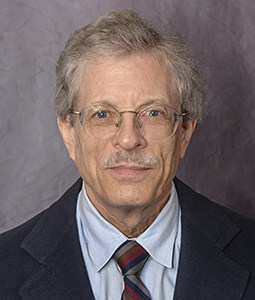Department of Physics and Astronomy
Faculty and Staff Directory
Carl Rosenfeld
| Title: | Research Professor Research Interest: Experimental High Energy Physics |
| Department: | Physics and Astronomy McCausland College of Arts and Sciences |
| Email: | lcr@sc.edu |
| Phone: | 803-777-8145 |
| Office: | Jones PSC, Room 605 |
| Resources: | Curriculum Vitae [pdf] |

Research Focus
Rosenfeld is an experimental particle physicist. He has emphasized work on electron-positron
colliding beam experiments and experiments on the properties of neutrinos. All such
experiments are carried out by multi-institutional collaborations. His major contributions
have been in the design, production, and commissioning of detector hardware and electronics
utilized in these projects. He participated in CLEO (www.classe.cornell.edu/Research/CLEO/), an electron-positron colliding beam experiment based at Cornell University, and
in AMY (en.wikipedia.org/wiki/AMY_(scientific_instrument)), another electron-positron colliding beam experiment, based at the Japanese National
Laboratory for High Energy Physics (KEK). CLEO played a major role in the investigation
of b-quark physics. Subsequent to those projects Rosenfeld contributed to two Fermilab
based experiments on the properties of neutrinos. The DONUT experiment (www-donut.fnal.gov) was the first to observe the conversion of a tau-flavored neutrino to a tau lepton.
The MINOS experiment (www-numi.fnal.gov) was among the first generation of experiments to observe the oscillation of accelerator
produced mu-flavored neutrinos by virtue of their disappearance over a long baseline
(735 km). In due course the experiment observed the reappearance of these particles
as electron-flavored neutrinos. In parallel with MINOS Rosenfeld participated in
the CUORICINO experiment (crio.mib.infn.it/wig/Cuoricinopage/CUORICINO.php) based
at the deep underground facility of the Laboratori Nazionali del Gran Sasso in central
Italy. CUORICINO was an array of 62 tellurium oxide crystals (5 cm cubes) operated
at 10 mK in which the neutrinoless double-beta decay of one isotope of tellurium,
if it occurred with sufficient frequency, would have been observable by its bolometric
signature. Observation of neutrinoless double-beta decay would be highly instructive
vis-a-vis the masses and Majorana character of the constellation of neutrinos. Rosenfeld
also participated in CUORE-0, the first successor to CUORICINO, and presently participates
in CUORE (crio.mib.infn.it/wigmi/pages/cuore.php), which expanded the number of crystals
under observation to 988.
A list of selected publications co-authored by Rosenfeld is appended to his curriculum
vitae.